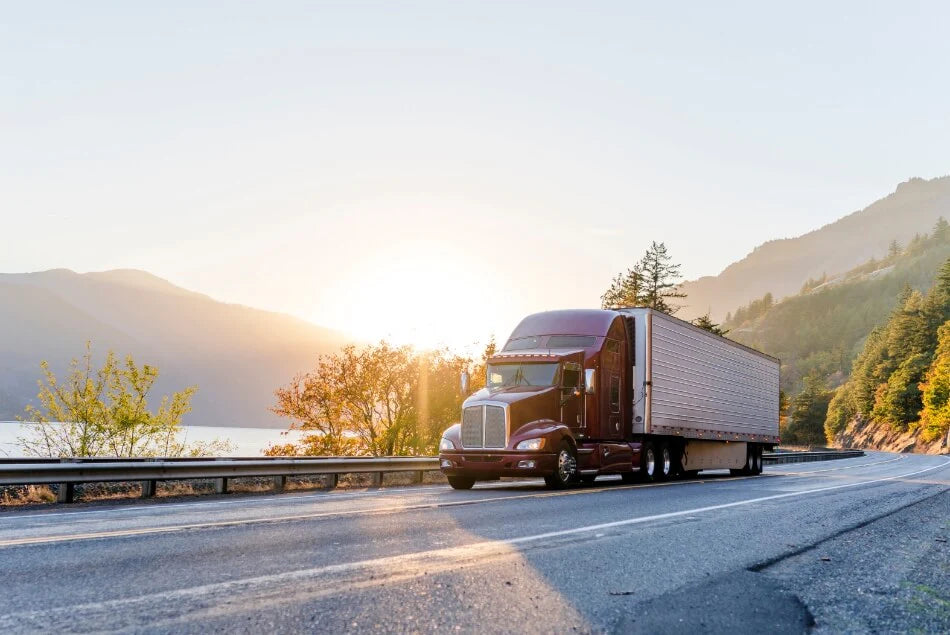As bridge strikes become a growing problem in the UK, we share our advice on how bridge strikes can be prevented. Buy that now Truckmate Bridge Saver direct from the UK manufacturer.
Driver Responsibilities
It is the driver's responsibility to know the height and width of their vehicle, know their route and obey road signs.
The following checks must be carried out before starting the journey:
- Checking the cargo is safe and secure
- Measurement of the height and width of the cab, trailer, its load and equipment
- Make sure the correct maximum height is displayed in the cabin
Drivers should not rely on headboard information as hitch heights may vary. Any discrepancies between the measured height and the height stated on the header must be reported to the transport manager.
Traveling
When driving, it should be noted that the height of the vehicle can change, e.g. B. by adjusting the fifth wheel or when loading or unloading a trailer. Using a truck-specific navigation system will help you plan routes that are specific to your vehicle's height, weight and width, and may create a new route if the vehicle's dimensions change, you are rerouted or hit on encounter obstacle.
Pay attention to traffic signs
Street signs are provided on bridges to indicate the maximum allowable vehicle height of less than 4.95 meters (16 ft-2 in).
Advanced Warning Signs
As you approach a bridge, signs may warn you of the upcoming restriction, allowing you to take an alternate route. However, not all low bridges have advance warning signs.
Red Circle Signs
Prohibit signs with red circles, that is, if a vehicle is taller than the stated dimensions, you must stop and do not pass the sign, as you are likely to collide with the bridge on this route.
Red triangle signs
Red triangle signs warn, so if the vehicle is taller than the stated dimensions, you should not pass the sign.
arch bridges
White lines and "gateposts" on an arched bridge may be provided to indicate the extent of the height limit stated on the sign. These are usually over three meters wide. Additional "goalposts" may appear towards the curb, showing the lower bounds. Make sure your vehicle drives between the correct posts if you feel it is safe to do so.
Vehicles with loads wider than three meters (9'-10') must take extra care as the maximum height available is below the advertised limit.
Altitude conversion table
|
foot inch |
meter |
|
16'-3” |
4.95 |
|
16'-0” |
4.88 |
|
15'-9” |
4.80 |
|
15'-6” |
4.72 |
|
15'-3” |
4.65 |
|
15'-0” |
4.57 |
|
14'-9” |
4.50 |
|
14'-6” |
4.42 |
|
14'-3” |
4.35 |
|
14'-0” |
4.27 |
|
13'-9” |
4.19 |
|
13'-6” |
4.11 |
|
13-3” |
4.04 |
|
13'-0” |
3.96 |
|
12'-9” |
3.89 |
|
12'-6” |
3.81 |
|
12'-3” |
3.73 |
|
12'-0” |
3.66 |
|
11'-9” |
3.58 |
|
11'-6” |
3.51 |
|
11'-3” |
3.43 |
|
11'-0” |
3.35 |
|
10'-0” |
3.05 |
|
9'-0” |
2.75 |
So remember to know the height and width of your vehicle, know your route and obey road signs. If you build a bridge, it is advisable to report the building to the railway authorities and the police immediately. Take a look this blog post, for more information on what to do when you hit a bridge.
Are you looking for a device that will do the hard work for you? Take a look at the all-new Truckmate bridge saver , specially designed to protect you from bridging. You can find the entire Truckmate range here here .

